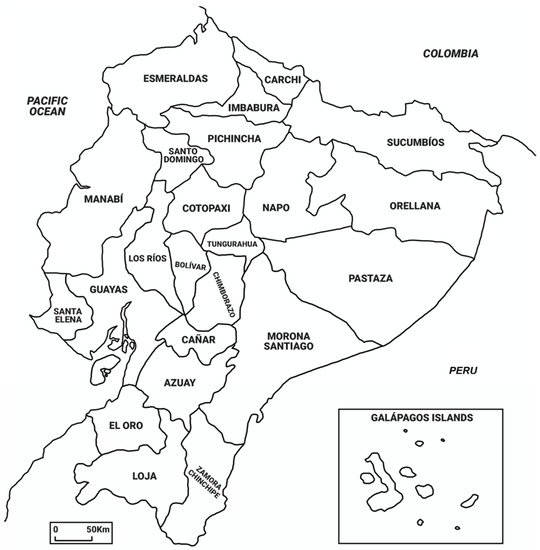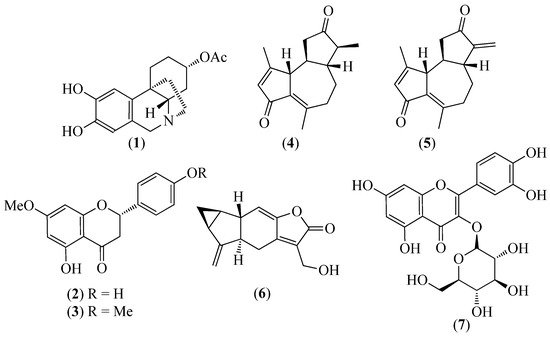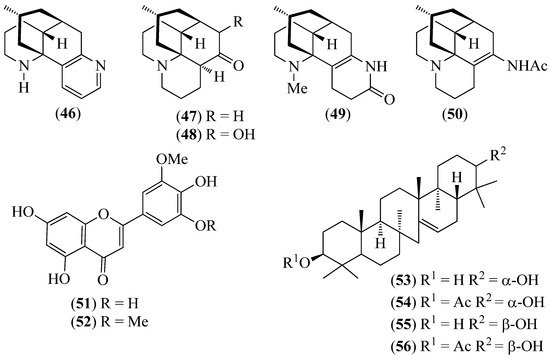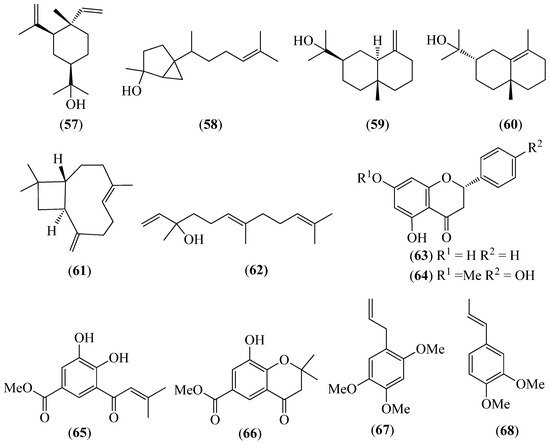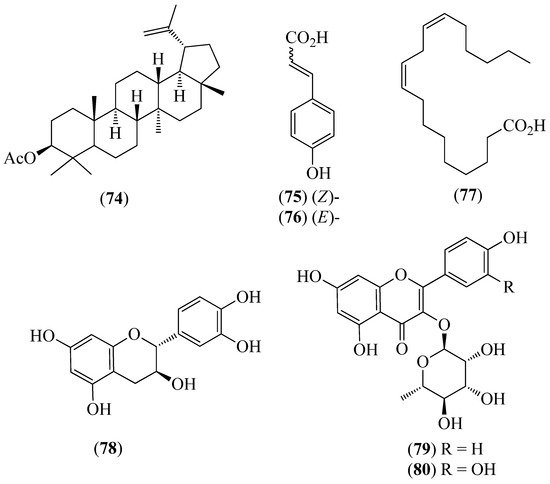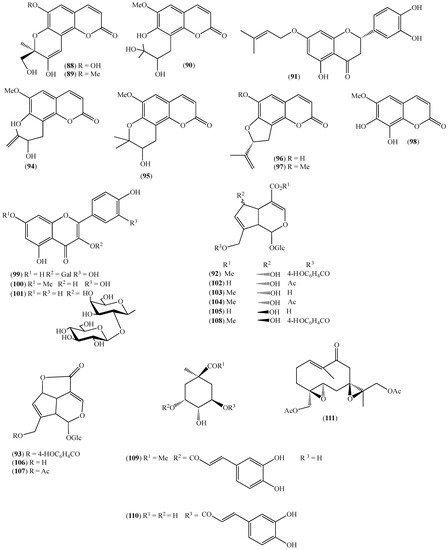The use of plants as therapeutic agents is part of the traditional medicine that is practiced by many indigenous communities in Ecuador.
1. Introduction
The geographic location of Ecuador, together with its geological features, makes the country’s biodiversity one of the richest in the world. Ecuador is, indeed, considered among the 17 megadiverse countries, accounting for about 10% of the entire world plant species, and every year new plants are discovered and added to the long list of the species already known. This fact makes Ecuador an invaluable source of potentially new natural products of biological and pharmaceutical interest, such as carnosol, tiliroside
[1], and dehydroleucodine (DL)
[2]. Moreover, most plants are considered to be medicinal, where they are a fundamental part of the health systems of several Ecuadorian ethnic groups
[3]. The knowledge of traditional healer practitioners has been maintained over hundreds or even thousands of years
[4]. Therefore, herbal remedies have gained acceptance thanks to the apparent efficacy and safety of plants over the centuries
[5]. As a result, several doctors, especially in government intercultural health districts, practice integrated forms of modern and traditional medicine nowadays.
Scientific evidence of the therapeutic efficacy and absence of toxicity in Ecuadorian medicinal plants and their products has started to be collected only in the last few decades by the researchers of several groups in different Ecuadorian Universities. This scientific activity has increased dramatically in recent years, thanks to the support of the Ecuadorian people and government authorities, who consider the sustainable use of biodiversity resources a possible source of economic wealth.
Many of the scientific articles mentioned in this review refer to studies that were carried out on plants and traditional preparations from southern Ecuador, especially from the province of Loja (Figure 1), which has a long tradition in exporting medicinal plants of great importance for human health, such as quina (Cinchona spp.) and condurango (Marsdenia condurango Rchb.f.).
Figure 1. Provinces of Ecuador.
2. Phytochemical and Biological Activity Data
For each species, the vernacular name and some botanical information, when available, are indicated, together with the traditional use and the phytochemical and the biological activity data when available. The structures of some characteristic compounds are reported in Figure 2, Figure 3, Figure 4, Figure 5, Figure 6, Figure 7, Figure 8, Figure 9, Figure 10, Figure 11, Figure 12 and Figure 13.
Figure 2. Structures of compounds 1 from Pseudodranassa spp., 2 and 3 from Baccharis obtusifolia, 4 and 5 from Gynoxis verrucosa, 6 from Hedyosmum racemosum, and 7 from Clusia latipes.
Figure 3. Structures of compounds 8–12 from Bejaria resinosa and 13–16 from Croton ferrugineus.
Figure 4. Structures of compounds 17–23 from Croton thurifer.
Figure 5. Structures of compounds 24–27 from Otholobium mexicanum.
Figure 6. Structures of compounds 28 and 29 from Lepechinia heteromorpha; 30–33 from L. mutica; 28–30 and 34 from L. paniculata; and 33, 35, and 36 from L. radula.
Figure 7. Structures of compounds 37–39 from Grias neubertii and 40–45 from Gaiadendron punctatum.
Figure 8. Structures of compounds 46–50 from Huperzia compacta, H. columnaris, and H. tetragona; 51 and 52 from H. brevifolia and H. espinosana; and 53–56 from H. crassa.
Figure 9. Structures of compounds 57–60 from Piper barbatum; 61 and 62 from P. coruscans; 62 and 63 from P. ecuadorense; 64–66 from Piper lanceifolium; and 61, 62, 67 and 68 from P. pubinervulum.
Figure 10. Structures of compounds 69–73 from Piper subscutatum.
Figure 11. Structures of compounds 74–80 from Muehlenbeckia tamnifolia.
Figure 12. Structures of compounds 81–84 from Oreocallis grandiflora and 85–87 from Roupala montana.
Figure 13. Structures of compounds 88–110 from Arcytophyllum thymifolium and 111 from Siparuna echinata.

